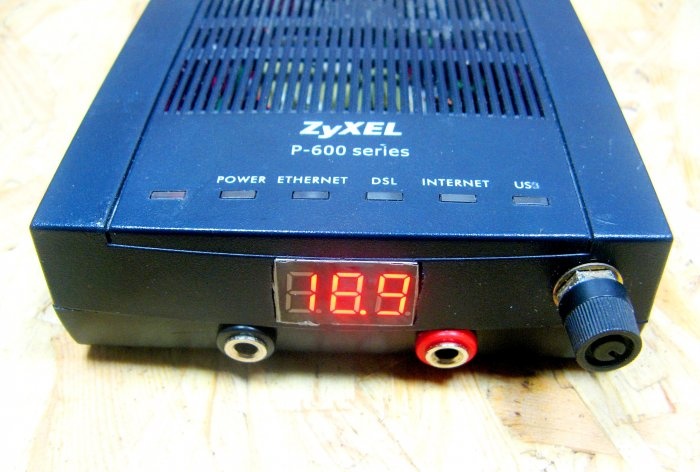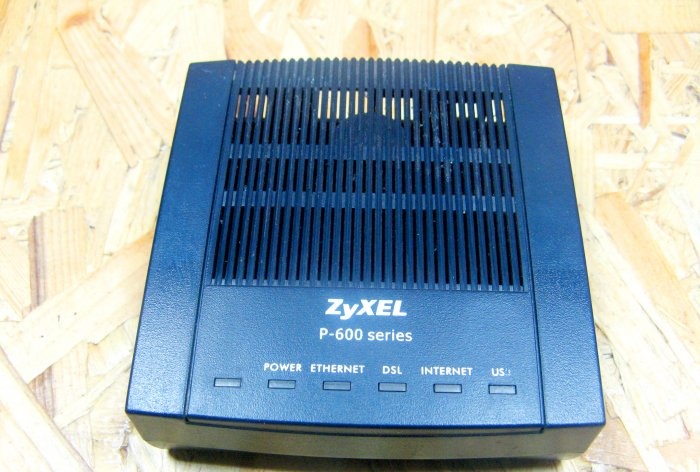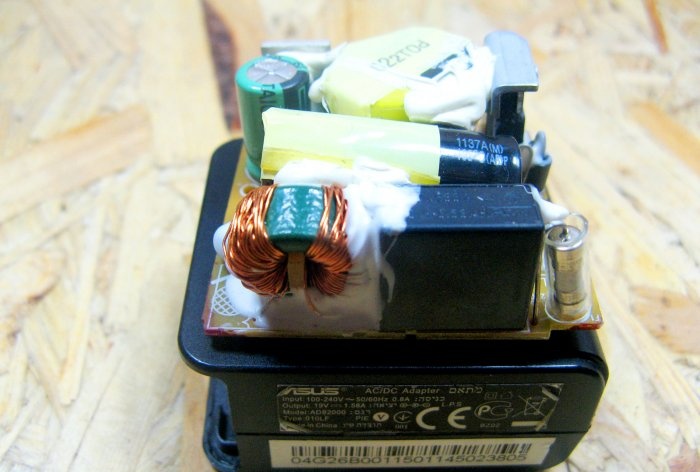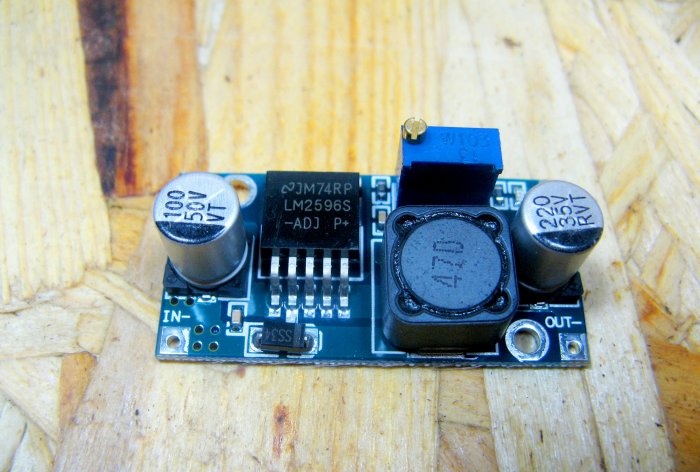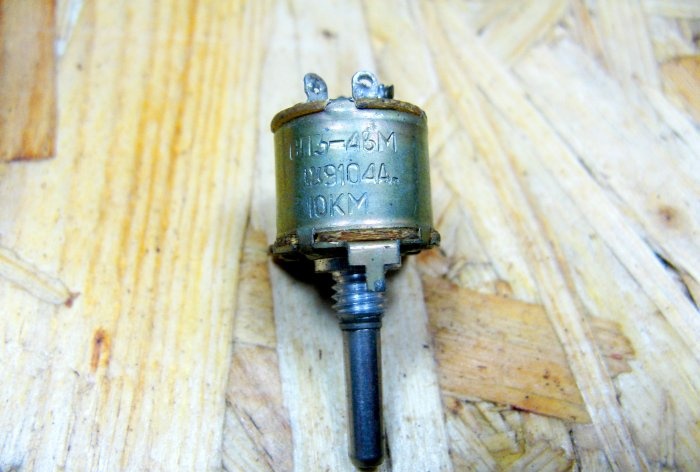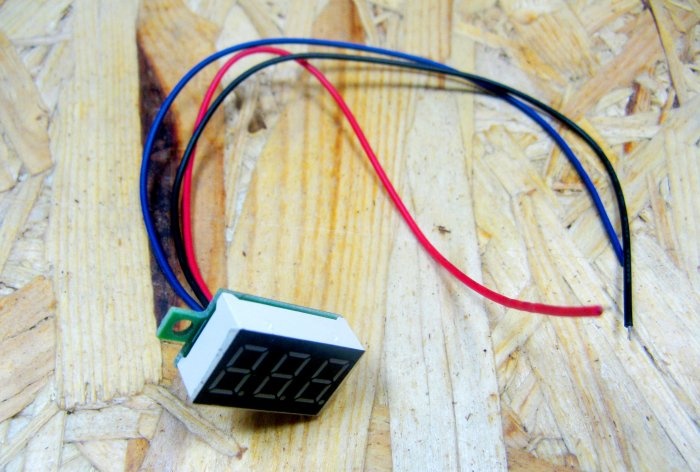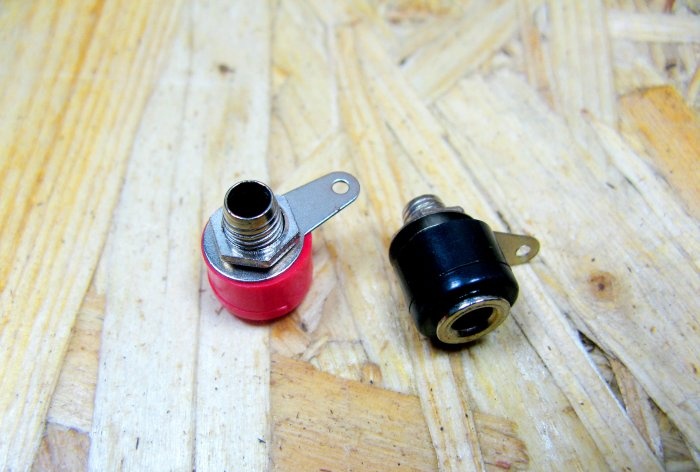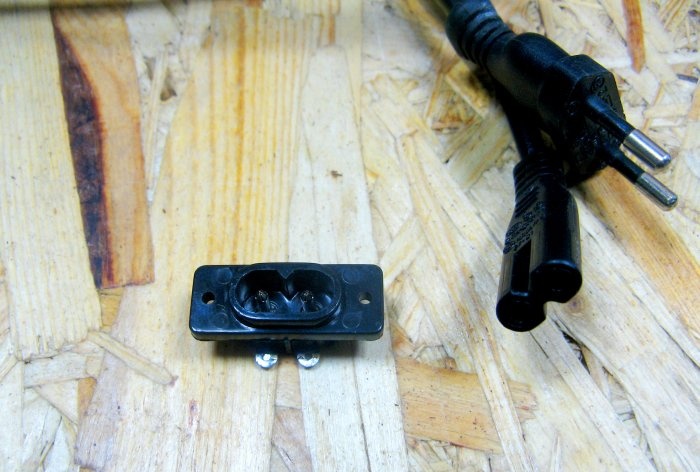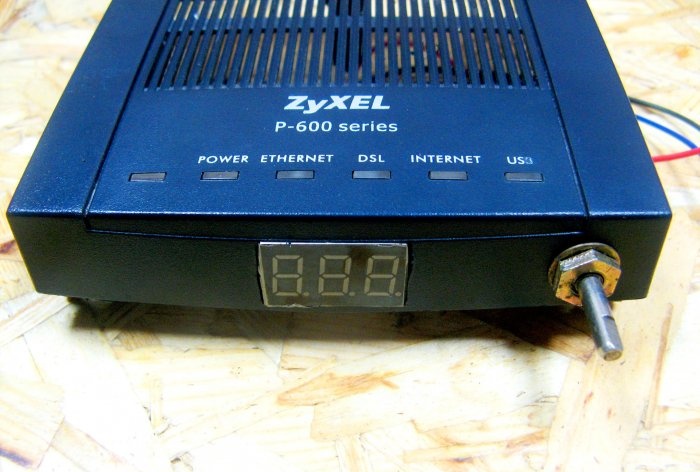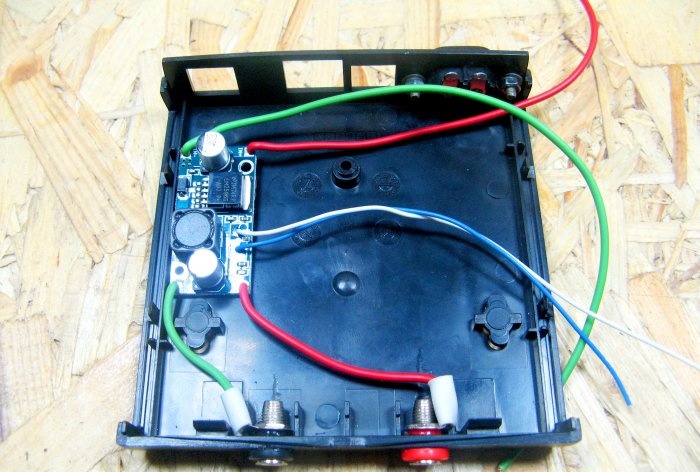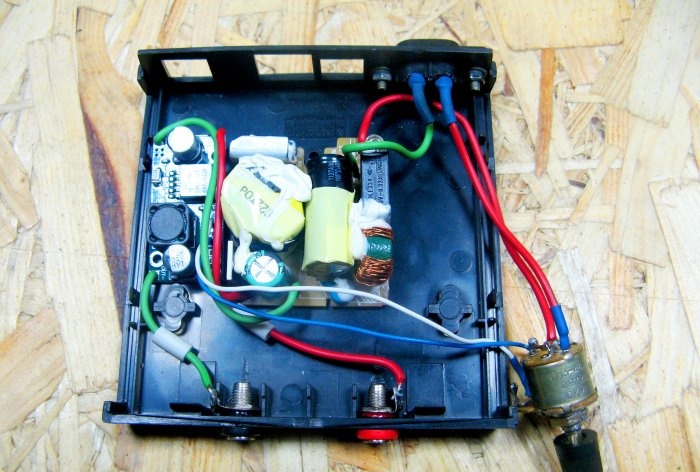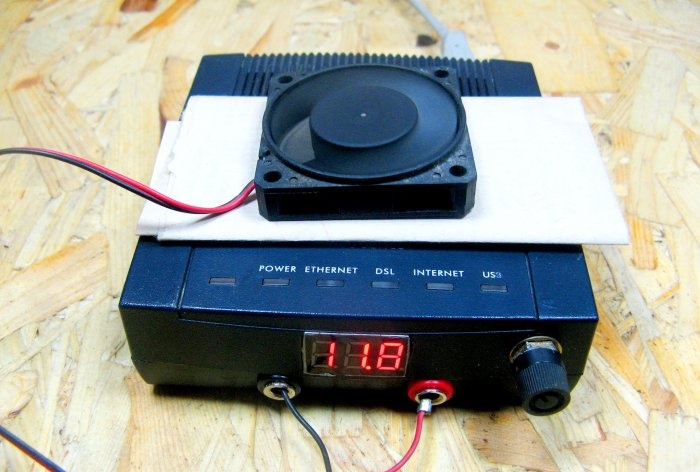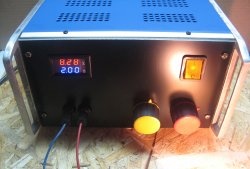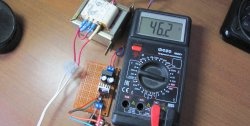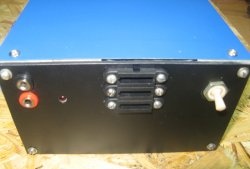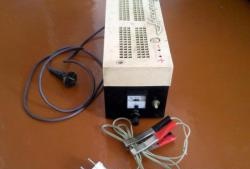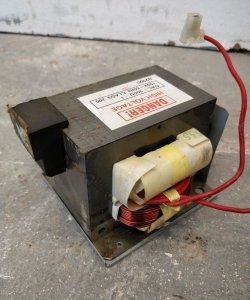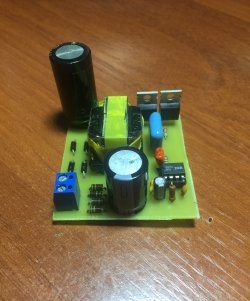An adjustable power supply is a necessary thing. In general, I think there should be a sufficient number of power supplies. For small needs, my father needed an adjustable power supply. Having studied our deposits, we collected a number of components. I decided to build a small power supply unit.
What will be needed for production?
A suitable case for my idea is a box from an old modem. Paint over the windows LEDs I won't. I didn’t draw the diagram, it’s very simple. The mains power supply will reduce the mains voltage. The output voltage will be adjusted Chinese module LM2596 DC-DC.
As a basis, I will use a network power supply from a netbook. It is small in size. Output voltage is 19 volts and maximum current is 1.54 amperes.
I will regulate the output voltage using this module. It is quite reliable and cheap.
I will replace the trimmer resistor of the module with an adjusting resistor. The resistor is combined with a switch, very convenient. It can be used without a switch, but then a separate switch is needed.
The output voltage indicator is voltmeter from China. It is compact and quite accurate.
I used Chinese banana type terminals.It doesn’t matter, you can use any suitable ones.
Network connector, whatever it is. Took it off an old flashlight.
Small-sized and adjustable DIY power supply
The first thing I finish is the lid. You need to mark the locations for the voltmeter and resistor. I glue it with masking tape and mark it on it.
I cut out the window for the voltmeter with a sharp knife. I drill the hole with a suitable drill. I'm trying it on. The axis of the resistor turned out to be long, I’ll cut it using sandpaper. You also need to make a cut under the handle.
I install terminals on the bottom of the case. I also screw in the wires. The wires will go to the control module.
I cut a hole on the back of the case. I install a connector for connecting the power cord.
I'll seal up the extra holes later. I will close them with a piece of the printer cover.
I install the adjustment module and solder the wires to it. I also removed the tuning resistor. Instead of the soldered resistor, I soldered wires.
I connect the output of the netbook power supply to the adjustment module. I solder the wires to a control resistor. I run one wire from the network connector to the power supply. I break the second one with a resistor switch.
To power the voltmeter I will use stabilizer on TL431. The stabilizer is assembled according to a standard design. I chose 9 volt power. The resistors were calculated using an online calculator.
I fix the boards with pieces of PVC plastic. I drip glue and apply a piece. The plastic sticks instantly. Holds up great.
I fix the stabilizer with thermal glue. Holds up great. I power the stabilizer from the output of the main 19 volt source.
I unsolder the wires from the voltmeter to the stabilizer. I install the adjustment resistor. I put a handle on the resistor. I connect both halves of the case and tighten it with a screw.
The result of the power supply
The output voltage is adjustable from 1.24 volts.
Up to 18.9 volts.
The output voltage is stable. This unit is perfect for small household needs. You can even adjust the fan speed, or even adjust the brightness of the LED strip.
This is a small power supply with regulation. This case has passive cooling. If you use a closed housing, you need to take care of air ventilation.
